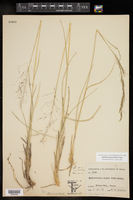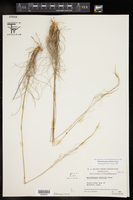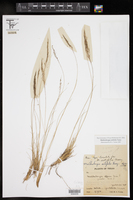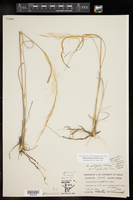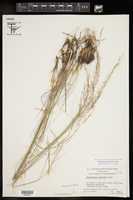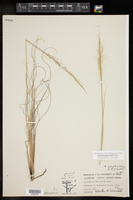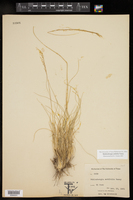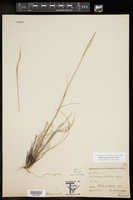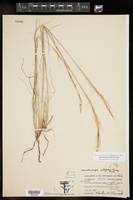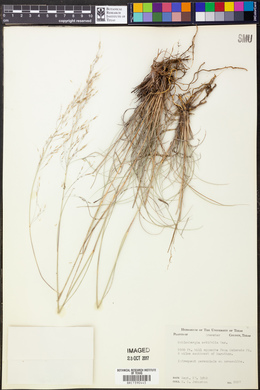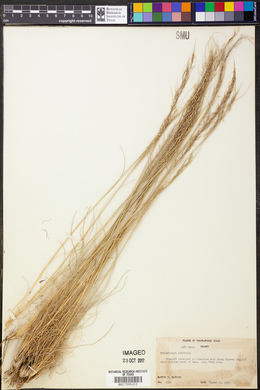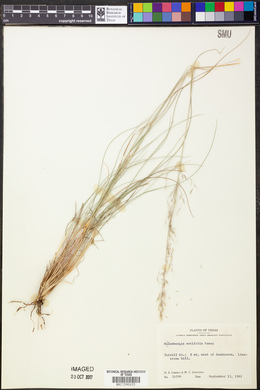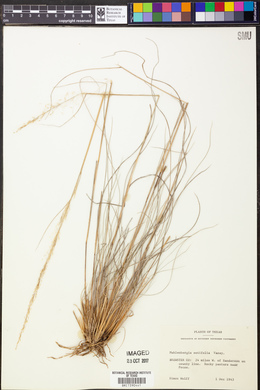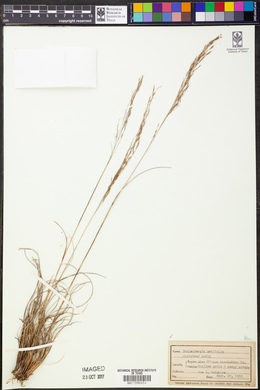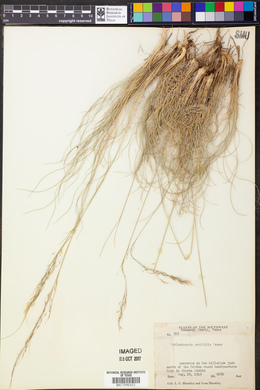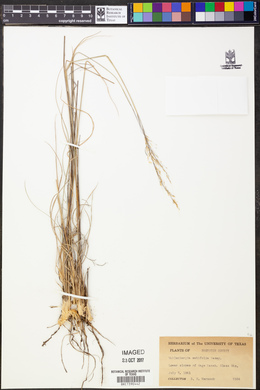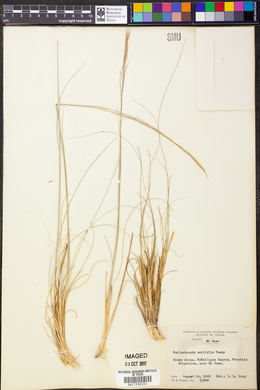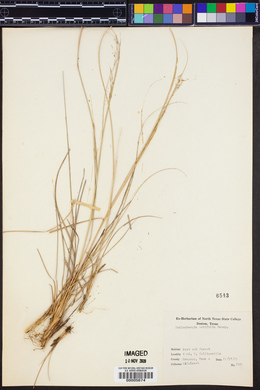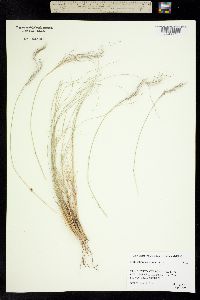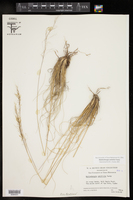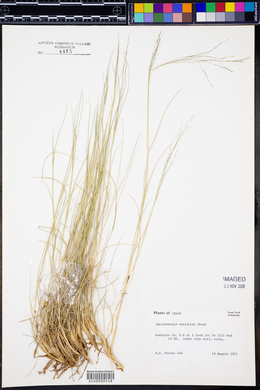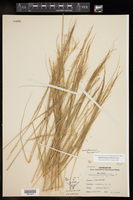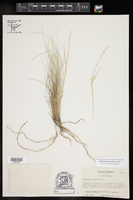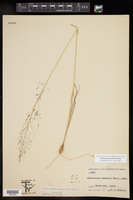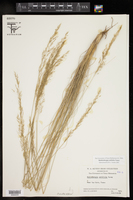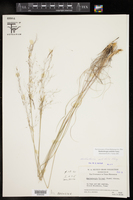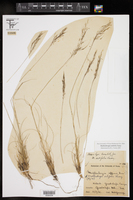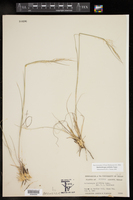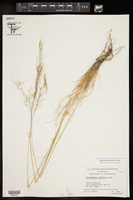Muhlenbergia setifolia
|
|
|
|
Family: Poaceae
Curly-Leaf Muhly, more...curlyleaf muhly
|
Plants perennial; cespitose, not rhizomatous. Culms 30-80 cm, slightly decumbent basally, erect above, not conspicuously branched, branches, when present, not geniculate and widely divergent; internodes mostly glabrous, sometimes hirtellous below the nodes. Sheaths shorter than the internodes, glabrous, margins whitish, rounded towards the base, not becoming spirally coiled when old; ligules 4-7(10) mm, acuminate, lacerate; blades 5-20(25) cm long, 0.2-1.2 mm wide, tightly involute, arcuate, scabrous abaxially, scabrous or hirtellous adaxially. Panicles 8-20(25) cm long, 2-5 cm wide, loosely contracted; primary branches 0.5-7 cm, capillary, diverging up to 70° from the rachises, naked basally; pedicels 3-20 mm. Spikelets 3.5-5 mm, stramineous to brown or purplish. Glumes subequal, 1.5-2.5 mm, shorter than the florets, thin, hyaline, glabrous; lower glumes without veins, truncate or obtuse, often toothed or notched; upper glumes 1-veined or veinless, obtuse to acute, often mucronate, mucros shorter than 0.7 mm; lemmas 3.5-5 mm, narrowly lanceolate, calluses hairy, hairs to 0.6 mm, lemma bodies glabrous, smooth, shiny, apices acuminate, awned, awns 10-30 mm, clearly demarcated from the lemma bodies, flexuous; paleas 3.5-5 mm, narrowly lanceolate, glabrous, acuminate; anthers 2-2.6 mm, greenish. Caryopses 2.4-3.2 mm, fusiform, brownish. 2n = 40. Muhlenbergia setifolia grows on calcareous rocky slopes, rock outcrops, and in desert grasslands, at elevations of 1000-2250 m. Its range extends from the southwestern United States into northern Mexico. It is similar to M. reverchonii, but differs in its narrower panicles, less widespread panicle branches, truncate to obtuse glumes, and longer lemma awns. FNA 2003, Gould 1988 Common Name: curlyleaf muhly Duration: Perennial Nativity: Native Lifeform: Graminoid General: Tufted perennial grass, not rhizomatous; stems 30-80 cm, slightly decumbent basally but not geniculate, erect above; internodes mostly glabrous, sometimes hirtellous below the nodes. Vegetative: Sheaths shorter than the internodes, glabrous, the margins whitish; ligules 4-10 mm, acuminate, lacerate; blades 5-25 cm long, 0.2-1 mm wide, tightly involute, arcuate, scabrous. Inflorescence: Panicles 8-25 cm long, 2-5 cm wide, loosely contracted; primary branches 0.5-7 cm, capillary, diverging up to 70 degrees from the rachises, naked basally; pedicels 3-20 mm; spikelets 3.5-5 mm, stramineous to brown or purplish; glumes subequal, 2 mm, shorter than the florets, thin, hyaline, glabrous; lemmas 3.5-5 mm, narrowly lanceolate, calluses hairy, the hairs to 0.6 mm, lemma bodies glabrous, smooth, shiny, with flexulous awns 10-30 mm. Ecology: Found on calcareous rocky slopes, rock outcrops, and in desert grasslands, at elevations of 3,000 - 7,500 ft (914-2286 m); flowers August to September. Distribution: s NM and w TX, south into n MEX. Notes: Muhlenbergia is a large and diverse genus primarily distinguished by having single-flowered spikelets with unequal glumes. M. setifolia is a NM-TX tufted muhly with awned spikelets. Appears similar to the more widespread M. montana, but that species has wider blades (up to 2.5 mm wide) and flat ribbonlike lower leaf sheaths. Also appears similar to M. pauciflora, but that species has narrower, contracted panicles which can appear racemose,and sometimes has rhizomes and geniculate lower stems. Ethnobotany: unknown Etymology: Muhlenbergia is named for Gotthilf Heinrich Ernst Muhlenberg (1753-1815) a clergyman and botanist from Pennsylvania; setifolia means -bristly leaves.- Synonyms: None Editor: AHazelton 2015 |






